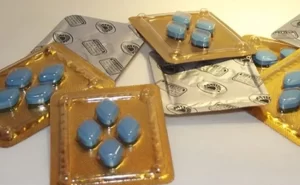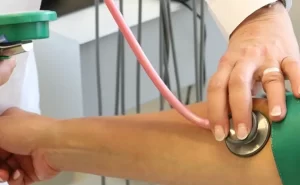Duration of the Intravaginal Ejaculation Irregularity
The term “intravaginal ejaculation latency time” (IELT), which is also referred to as “intravaginal ejaculation time” (IET) depending on the circumstances, describes the duration of time that a male takes to ejaculate following vaginal penetration while engaging in sexual activity. An individual’s ability to delay orgasm during sexual activity can be evaluated using this method.
A summary of some of the most critical aspects of IELT is as follows:
The average IELT: There is no one “normal” IELT that can be definitively identified. According to studies, the median IELT for males who have healthy sexual function is approximately five to six minutes. This indicates that half of the population falls over this amount, while the other half falls below it. On the other hand, IELT can result in significant differences across individuals and can be influenced by several circumstances.
Age, relationship satisfaction, novelty of the partner, degree of stress, anxiety, and certain drugs are all factors that can influence IELT. Other factors that can influence IELT include other medications. The average IELT score tends to decline with increasing age.
Suppose a man routinely ejaculates within one minute following vaginal penetration. In that case, this may be considered a condition known as premature ejaculation (PE). PE is an abbreviation for “premature ejaculation.”
This is a frequent sexual health problem that affects a lot of men, and it can have a significant impact on the level of sexual satisfaction they experience as well as the quality of their relationships with other people.
Although the precise origins of PE are not entirely understood, it is believed that a mix of psychological, physiological, and neurological variables influences the development of the condition.
The condition known as premature ejaculation is characterized by an inability to maintain control of ejaculation for a sufficient amount of time to please both partners during sexual activity. Throughout their lifetimes, it is predicted that as many as thirty percent of all men will have premature ejaculation at some point.
Although the precise origins of PE are not entirely understood, it is believed that a mix of psychological, physiological, and neurological variables influences the development of the condition.
Several potential variables can contribute to premature ejaculation. These factors include anxiety, stress, depression, performance anxiety, trouble with arousal and stimulation, hormone imbalances, and neurological abnormalities.
Some people may have a problem with physical education for the rest of their lives, while others may develop it later in life as a result of various life events or changes.
Premature ejaculation can be a source of anguish and frustration for both the individual and their partner, regardless of the underlying reason for the condition. Feelings of inadequacy, low self-esteem, and strained relationships are all possible outcomes of this phenomenon.
There are several treatment options available, including behavioral therapy, medication, and a combination of the two, which can assist men in gaining better control over their ejaculatory response and improving their overall sexual performance and happiness. Fortunately, these treatment choices are available.
It is essential for those who are suffering from premature ejaculation to get professional assistance from a healthcare expert, such as a urologist or sex therapist, who can give a complete evaluation and propose the treatment plan that is best suitable for them.
Men can overcome premature ejaculation and enjoy sexual encounters that are gratifying and satisfactory if they receive the appropriate assistance and the proper therapies.
The majority of men can overcome premature ejaculation and enjoy sexual encounters that are gratifying and satisfactory if they receive the appropriate assistance and the proper therapies.
Here are some other considerations to take into account:
Aim for Enjoyment: The primary goal of sexual activity should not be to achieve a particular IELT; rather, it should be to gain enjoyment and intimacy.
Communication Is Crucial: When it comes to having an enjoyable sexual life, it is essential to have open conversations with your spouse about your sexual needs and worries.
Choices for Treatment of Physical Education: If you are concerned about physical education, various treatment choices are available. These possibilities include behavioral approaches, drugs, and therapy. A physician can assist in determining the reason for your PE and recommend the most suitable treatment method.
The following is a list of resources that you might find helpful:
American Urological Association (AUA): https://www.auanet.org/guidelines-and-quality/guidelines/disorders-of-ejaculation
Mayo Clinic website: https://www.mayoclinic.org/diseases-conditions/premature-ejaculation/doctors-departments/ddc-20354906
It is essential to keep in mind that IELT is just one component of a sexual life that is both healthy and happy. With your spouse, you should prioritize communication, closeness, and finding out what works best for both of you.













